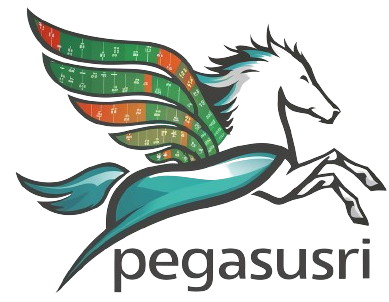Introduction to Investing $100,000
Investing $100,000 is a significant financial decision that requires careful consideration and planning. With this amount of capital, you have a wide range of investment options available, each with its own potential benefits and risks. Whether you choose to invest in traditional assets like real estate and stocks or explore alternative investments, it’s essential to align your strategies with your financial goals and risk tolerance.
Why Investing $100,000 is Significant
Investing $100,000 can have a substantial impact on your financial future. This sum allows you to build a diversified investment portfolio that can generate meaningful returns over time. By making smart investment choices, you can potentially grow your wealth, secure your retirement, and achieve other important financial milestones.
However, investing such a significant amount also comes with responsibilities. It’s crucial to approach the process with diligence, research, and a clear understanding of your investment objectives. Seeking guidance from a financial advisor or utilizing robo-advisor services can help you navigate the complex world of investing and make informed decisions.
Understanding Your Investor Profile
Before diving into specific investment strategies, it’s essential to understand your investor profile. This involves assessing your financial goals, risk tolerance, and investment timeline. Are you a hands-on investor who enjoys actively managing your portfolio, or do you prefer a more passive approach? Do you have a high risk tolerance and seek aggressive growth, or are you more conservative and prioritize capital preservation?
Answering these questions will help you determine whether you should handle your investments independently, utilize a robo-advisor for automated portfolio management, or work with a financial advisor who can provide personalized guidance. Understanding your investor profile is the foundation for creating an investment plan that aligns with your unique circumstances and objectives.
Traditional Investment Options
When considering where to invest $100,000, traditional investment options such as real estate and the stock market are often top of mind. These asset classes have a long history of generating returns and can play a significant role in a well-rounded investment portfolio.
Investing in Real Estate
Real estate investment is a popular choice for those looking to diversify their portfolio and generate passive income. With $100,000, you have several options:
- Purchase a rental property: Investing in a rental property can provide a steady stream of rental income and potential long-term appreciation. However, being a landlord also comes with responsibilities and risks.
- Real estate investment trusts (REITs): REITs allow you to invest in a diversified portfolio of income-generating real estate properties without the hassle of direct ownership. They offer liquidity and professional management.
- Real estate crowdfunding: Crowdfunding platforms enable you to invest in specific real estate projects alongside other investors, providing access to opportunities that may have been previously out of reach.
Stock Market Investments
The stock market is another traditional avenue for investing $100,000. By purchasing shares of publicly traded companies, you can participate in the growth and profitability of businesses across various sectors. Consider the following approaches:
- Individual stocks: Investing in individual stocks allows you to hand-pick companies you believe have strong growth potential. However, this approach requires thorough research and carries higher risk compared to diversified investments.
- Mutual funds and exchange-traded funds (ETFs): Mutual funds and ETFs provide instant diversification by pooling money from multiple investors to purchase a basket of stocks. They offer professional management and lower risk compared to individual stock investing.
- Index funds: Index funds aim to mirror the performance of a specific market index, such as the S&P 500. They offer broad market exposure, low fees, and a passive investment approach.
Bonds and Fixed-Income Securities
Bonds and fixed-income securities are often considered a more conservative investment option. They provide a predictable stream of income through regular interest payments and can help balance the volatility of stocks in a portfolio. Options include:
- Government bonds: U.S. Treasury bonds are backed by the full faith and credit of the U.S. government and are considered one of the safest investments.
- Corporate bonds: Corporate bonds are issued by companies to raise capital. They typically offer higher yields than government bonds but also carry more risk.
- Municipal bonds: Municipal bonds are issued by state and local governments to fund public projects. They often provide tax-free income at the federal and/or state level.
Retirement Savings and Tax-Advantaged Accounts
When investing $100,000, it’s crucial to prioritize your retirement savings and take advantage of tax-advantaged investment vehicles. These accounts offer tax benefits that can help your money grow faster and more efficiently.
Maximizing 401(k) Contributions
If your employer offers a 401(k) plan, consider maximizing your contributions up to the annual limit. Many employers also offer matching contributions, which is essentially free money that can significantly boost your retirement savings. With $100,000 to invest, you can allocate a portion towards your 401(k) and benefit from the following advantages:
- Tax-deferred growth: Your contributions grow tax-deferred, meaning you don’t pay taxes on the investment gains until withdrawal in retirement.
- Automatic investing: 401(k) contributions are automatically deducted from your paycheck, making it a convenient and disciplined way to invest.
- Potential employer match: Employer matching contributions can provide an instant return on your investment and accelerate your retirement savings.
Benefits of IRAs
Individual Retirement Accounts (IRAs) are another valuable tool for investing towards retirement. With $100,000, you can contribute to a Traditional IRA or Roth IRA, depending on your income and tax situation. Here’s how they work:
- Traditional IRA: Contributions to a Traditional IRA may be tax-deductible, and the investments grow tax-deferred until withdrawal in retirement.
- Roth IRA: Contributions to a Roth IRA are made with after-tax dollars, but the investments grow tax-free, and qualified withdrawals in retirement are also tax-free.
- Flexibility: IRAs offer more investment options compared to 401(k) plans, allowing you to customize your portfolio to your specific goals and risk tolerance.
529 Plans for Education Savings
If you have children or grandchildren, investing a portion of your $100,000 in a 529 plan can help fund their future education expenses. 529 plans offer the following benefits:
- Tax-advantaged growth: Investments in a 529 plan grow tax-free, and withdrawals for qualified education expenses are also tax-free.
- Flexibility: Funds can be used for a wide range of education expenses, including tuition, fees, books, and room and board.
- Control: As the account owner, you maintain control over the funds and can change beneficiaries if needed.
Diversification and Risk Management
One of the key principles of successful investing is diversification. By spreading your $100,000 across different asset classes and investment vehicles, you can manage risk and potentially optimize returns. Here are some important considerations:
Importance of Diversification
Diversification helps mitigate the impact of any single investment’s performance on your overall portfolio. By allocating your $100,000 across various asset classes, such as stocks, bonds, real estate, and alternative investments, you can potentially:
- Reduce volatility: Different asset classes respond differently to market conditions. Diversification can help smooth out the overall performance of your portfolio.
- Minimize risk: Diversification reduces the risk of significant losses if one particular investment or sector underperforms.
- Capture opportunities: A well-diversified portfolio allows you to participate in the growth potential of different markets and industries.
Assessing Your Risk Tolerance
Understanding your risk tolerance is crucial when deciding how to allocate your $100,000 investment. Your risk tolerance is influenced by factors such as your age, investment timeline, financial goals, and personal comfort level with market fluctuations. Consider the following:
- Conservative investors prioritize capital preservation and may allocate a larger portion of their portfolio to bonds and fixed-income securities.
- Moderate investors seek a balance between growth and stability, typically allocating their assets across both stocks and bonds.
- Aggressive investors have a higher risk tolerance and may allocate a significant portion of their portfolio to stocks and alternative investments in pursuit of higher returns.
Assessing your risk tolerance helps determine the appropriate mix of assets in your portfolio and ensures that your investment strategy aligns with your financial and emotional capacity to handle market volatility.
Asset Allocation Strategies
Asset allocation is the process of dividing your investment portfolio among different asset classes based on your financial goals, risk tolerance, and investment timeline. Here are some common asset allocation strategies:
- Strategic asset allocation: This involves setting target percentages for each asset class and rebalancing periodically to maintain those targets.
- Tactical asset allocation: This strategy allows for adjustments to the asset mix based on short-term market conditions or economic factors.
- lifecycle funds: These funds automatically adjust the asset allocation over time, becoming more conservative as the investor approaches retirement age.
Implementing an appropriate asset allocation strategy with your $100,000 can help optimize your portfolio’s risk-return profile and ensure that your investments align with your long-term objectives.
Alternative Investment Options
In addition to traditional investment options, there are several alternative investment opportunities that can add diversification and potentially enhance returns to your $100,000 portfolio. Here are a few to consider:
Investing in REITs
Real Estate Investment Trusts (REITs) allow you to invest in a diversified portfolio of income-generating real estate properties without the responsibilities of direct ownership. REITs offer several advantages:
- Professional management: REITs are managed by experienced real estate professionals who handle property acquisition, management, and maintenance.
- Regular income: REITs are required to distribute at least 90% of their taxable income to shareholders in the form of dividends, providing a steady stream of income.
- Liquidity: Unlike direct real estate ownership, REITs can be bought and sold on stock exchanges, offering greater liquidity.
Investing a portion of your $100,000 in REITs can provide exposure to the real estate market while diversifying your portfolio.
Exploring Mutual Funds and ETFs
Mutual funds and Exchange-Traded Funds (ETFs) are investment vehicles that pool money from multiple investors to purchase a diversified portfolio of securities. They offer several benefits:
- Professional management: Mutual funds and ETFs are managed by experienced investment professionals who research and select securities for the fund.
- Diversification: By investing in a mutual fund or ETF, you gain exposure to a wide range of securities, reducing the impact of any single investment’s performance.
- Accessibility: Mutual funds and ETFs have lower minimum investment requirements compared to purchasing individual securities, making them accessible to a wider range of investors.
With $100,000 to invest, you can allocate a portion to mutual funds or ETFs that align with your investment objectives and risk tolerance.
Savings Accounts and CDs
While savings accounts and Certificates of Deposit (CDs) may not offer the highest potential returns, they can provide stability and preserve a portion of your $100,000 investment. Consider the following:
- Emergency fund: Allocating a portion of your funds to a high-yield savings account can provide a readily accessible emergency fund to cover unexpected expenses.
- Capital preservation: CDs offer a fixed rate of return over a specific term, ensuring the preservation of your principal investment. They are suitable for funds you don’t need immediate access to.
- Laddering strategy: By investing in multiple CDs with different maturity dates, you can create a laddering strategy that provides regular liquidity while potentially maximizing returns.
Tax Considerations and Investment Strategies
When investing $100,000, it’s important to consider the tax implications of your investment choices and implement tax-efficient strategies to maximize your returns.
Understanding Capital Gains Tax
Capital gains tax is the tax you pay on the profits earned from selling investments. It’s important to understand how capital gains tax works and how it can impact your investment decisions:
- Short-term capital gains: Profits from investments held for one year or less are taxed as ordinary income, subject to your marginal tax rate.
- Long-term capital gains: Profits from investments held for more than one year are taxed at a lower rate, depending on your income tax bracket.
- Tax-loss harvesting: Selling investments at a loss can offset capital gains and potentially reduce your tax liability.
By understanding capital gains tax and implementing tax-efficient strategies, you can minimize your tax burden and keep more of your investment returns.
Implementing Dollar-Cost Averaging
Dollar-cost averaging is an investment strategy that involves investing a fixed amount of money at regular intervals, regardless of market conditions. With $100,000 to invest, you can implement dollar-cost averaging to potentially:
- Reduce market timing risk: By investing consistently over time, you avoid the risk of investing a large sum at a market peak.
- Take advantage of market fluctuations: When prices are low, your fixed investment amount buys more shares, and when prices are high, it buys fewer shares. This can result in a lower average purchase price over time.
- Promote disciplined investing: Dollar-cost averaging encourages a systematic and disciplined approach to investing, reducing the impact of emotions on investment decisions.
Utilizing Technology for Investment Management
Technology has revolutionized the way individuals invest and manage their portfolios. With $100,000 to invest, you can leverage various technological tools and platforms to streamline your investment process and make informed decisions.
Benefits of Robo-Advisors
Robo-advisors are digital platforms that use algorithms and technology to provide automated investment management services. They offer several advantages:
- Low fees: Robo-advisors typically charge lower fees compared to traditional financial advisors, making them cost-effective for investors.
- Automated rebalancing: Robo-advisors automatically rebalance your portfolio to maintain your desired asset allocation, saving you time and effort.
- Accessibility: With low minimum investment requirements and user-friendly interfaces, robo-advisors make investing accessible to a wider range of investors.
Allocating a portion of your $100,000 to a robo-advisor can provide professional portfolio management at a lower cost.
Using Investment Apps and Online Brokers
Investment apps and online brokers have made it easier than ever to invest and manage your portfolio from your smartphone or computer. They offer the following benefits:
- Convenience: You can access your investment accounts, place trades, and monitor your portfolio anytime, anywhere.
- Lower trading fees: Online brokers often charge lower trading fees compared to traditional brokerages, allowing you to keep more of your investment returns.
- Educational resources: Many investment apps and online brokers provide educational content, research tools, and market insights to help you make informed investment decisions.
With $100,000 to invest, utilizing investment apps and online brokers can provide flexibility, control, and cost savings in managing your portfolio.
Setting and Achieving Financial Goals
Investing $100,000 is a significant milestone, but it’s important to have clear financial goals and a plan to achieve them. Consider the following:
Short-Term vs. Long-Term Goals
Your investment strategy should align with your financial goals, whether they are short-term or long-term:
- Short-term goals: These are goals you want to achieve within the next few years, such as saving for a down payment on a home or funding a child’s education. For short-term goals, you may prioritize capital preservation and liquidity.
- Long-term goals: These are goals with a longer time horizon, such as retirement or building generational wealth. For long-term goals, you may be willing to take on more risk in pursuit of higher potential returns.
Aligning your investment strategy with your short-term and long-term goals helps ensure that your $100,000 is working towards your desired financial outcomes.
Continuous Education and Staying Informed
Investing is a continuous learning process, and staying informed about market trends, economic conditions, and investment strategies is crucial for making sound decisions. Here are some ways to stay educated:
- Read financial news and publications: Follow reputable financial news sources and publications to stay updated on market developments and investment trends.
- Attend investment seminars and webinars: Participate in educational seminars and webinars offered by financial institutions, robo-advisors, or online brokers to expand your investment knowledge.
- Seek professional advice: Consult with a financial advisor or investment professional who can provide personalized guidance and insights based on your specific financial situation.
By continuously educating yourself and staying informed, you can make more informed investment decisions and adapt your strategy as needed.
Conclusion: Making Smart Investment Decisions
Investing $100,000 is a significant opportunity to grow your wealth and achieve your financial goals. By understanding your investment options, assessing your risk tolerance, and implementing sound investment strategies, you can make smart decisions that align with your objectives.
Remember to prioritize diversification, consider tax implications, and leverage technology to streamline your investment process. Continuously educate yourself and stay informed about market trends to adapt your strategy as needed.
Investing $100,000 wisely can set you on the path to financial success and help you build a secure financial future. Take the time to carefully consider your options, seek professional advice when needed, and stay disciplined in your investment approach. With smart investment decisions and a long-term perspective, you can maximize the potential of your $100,000 investment and achieve your financial aspirations.
See also:






